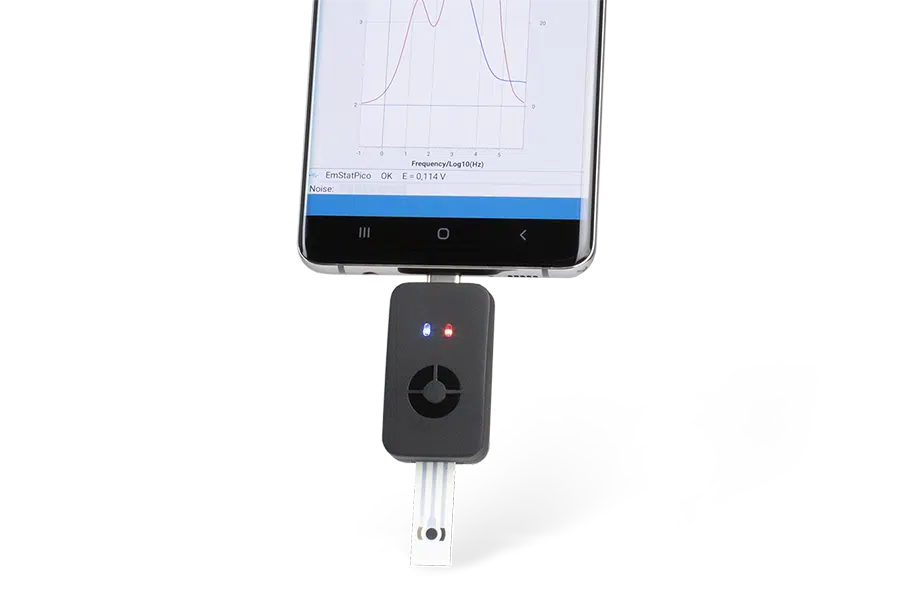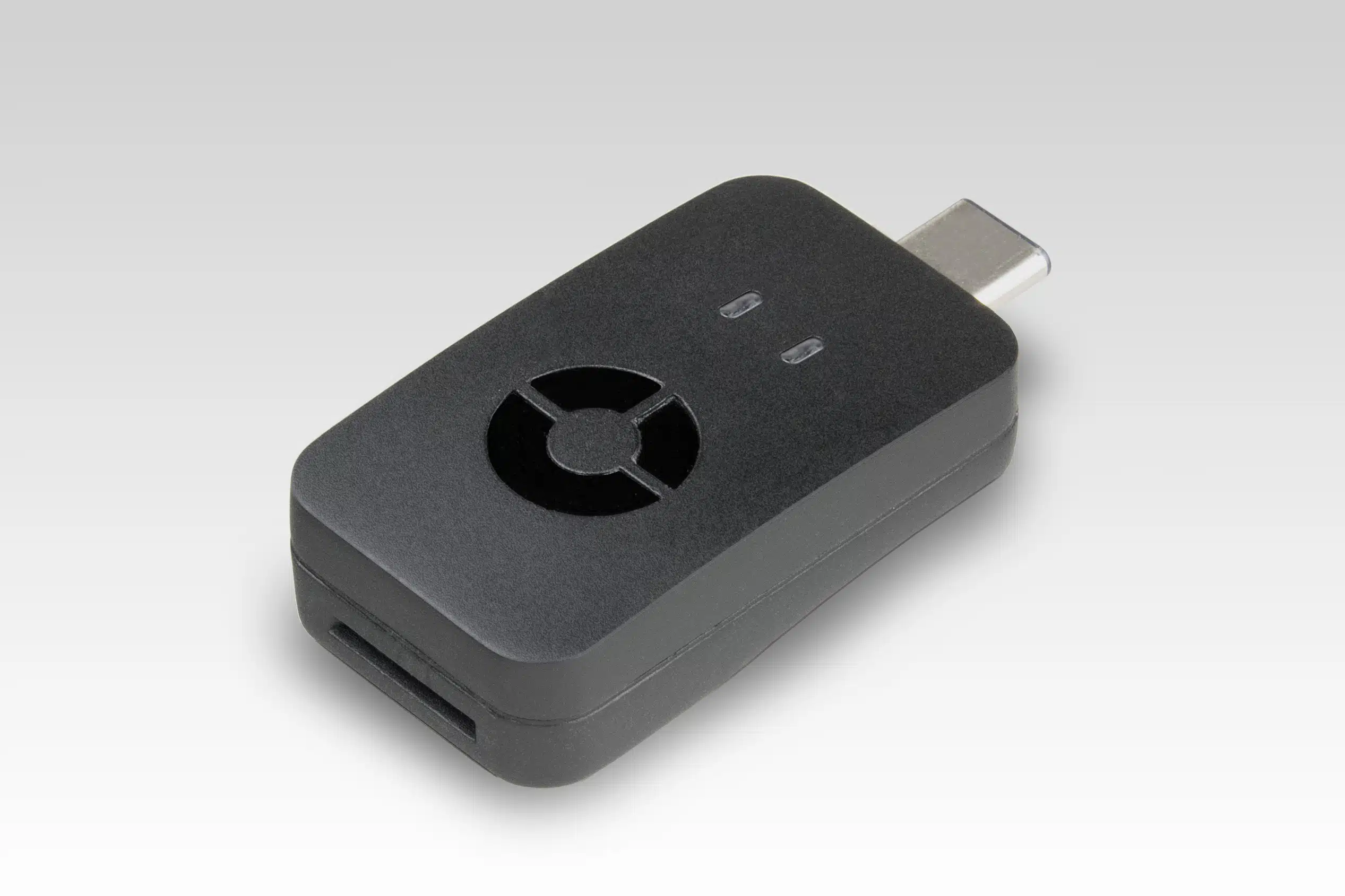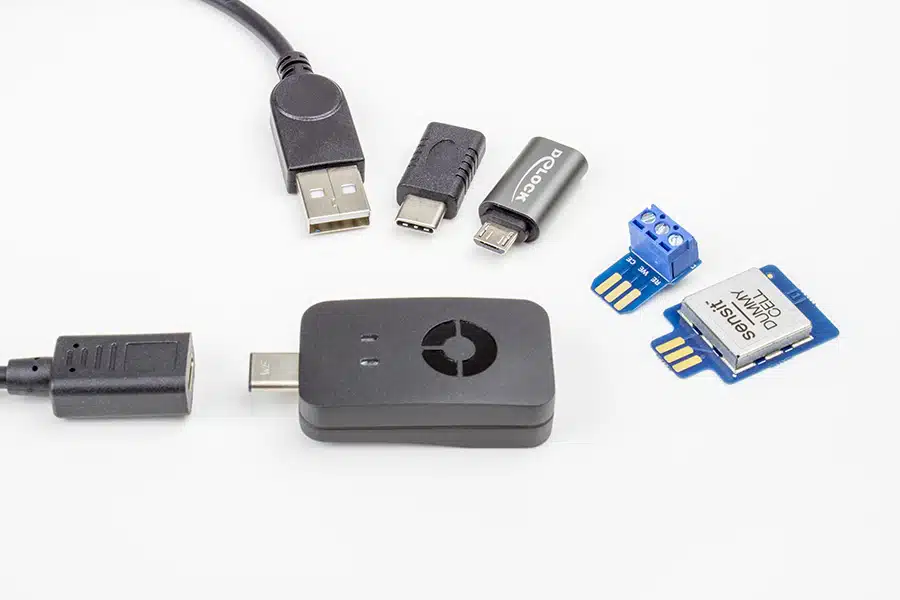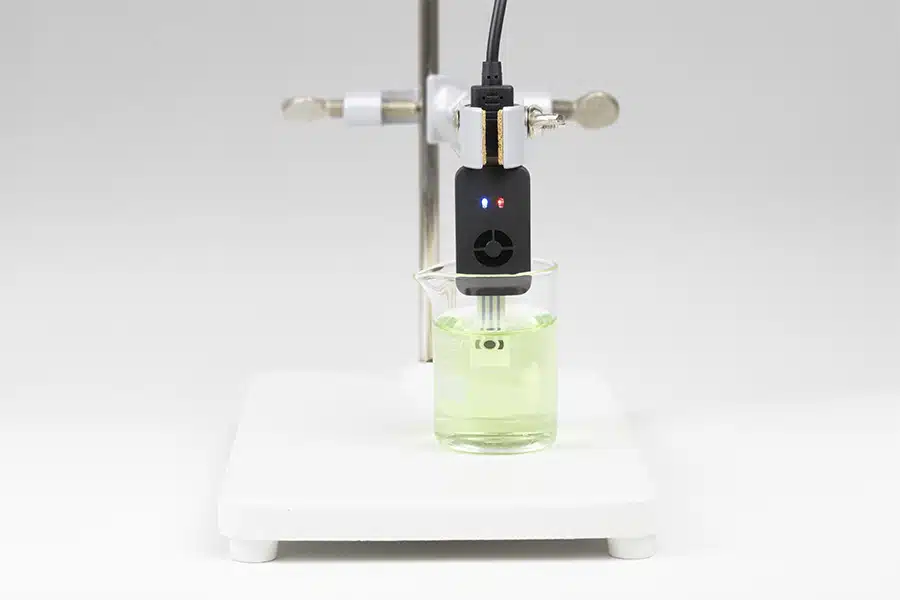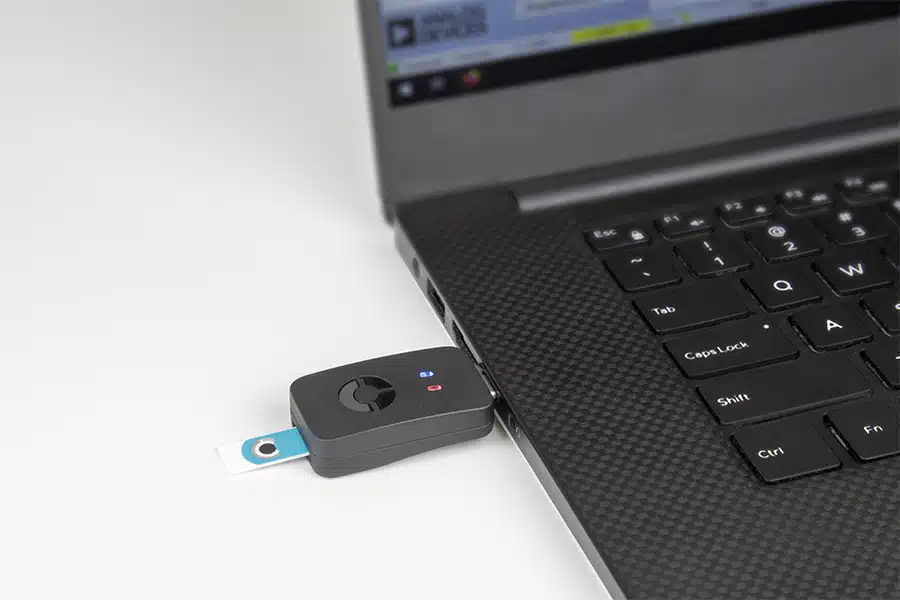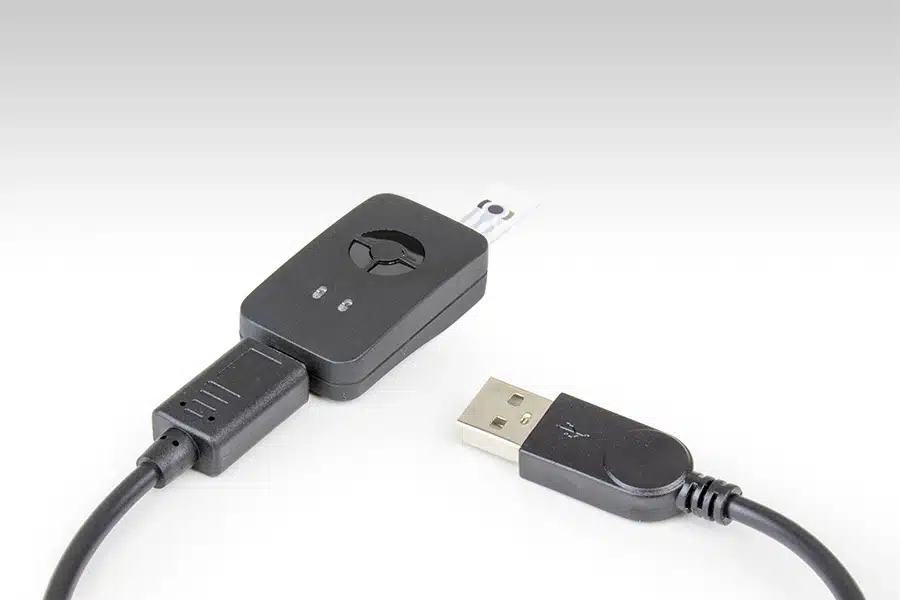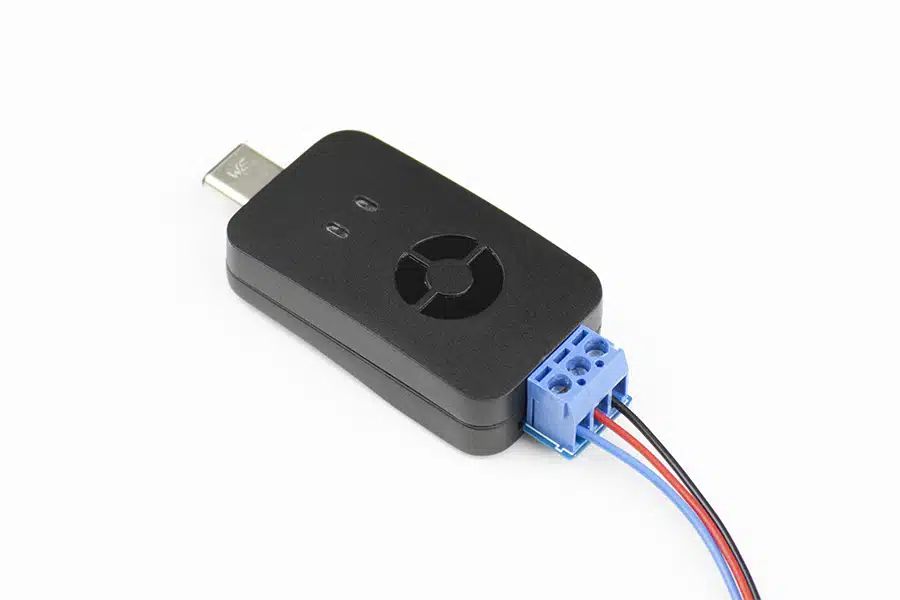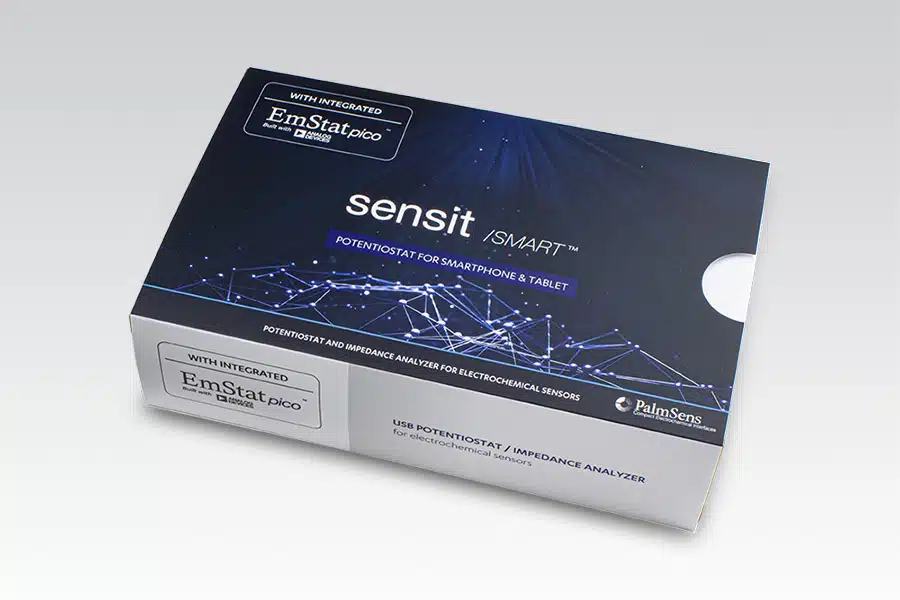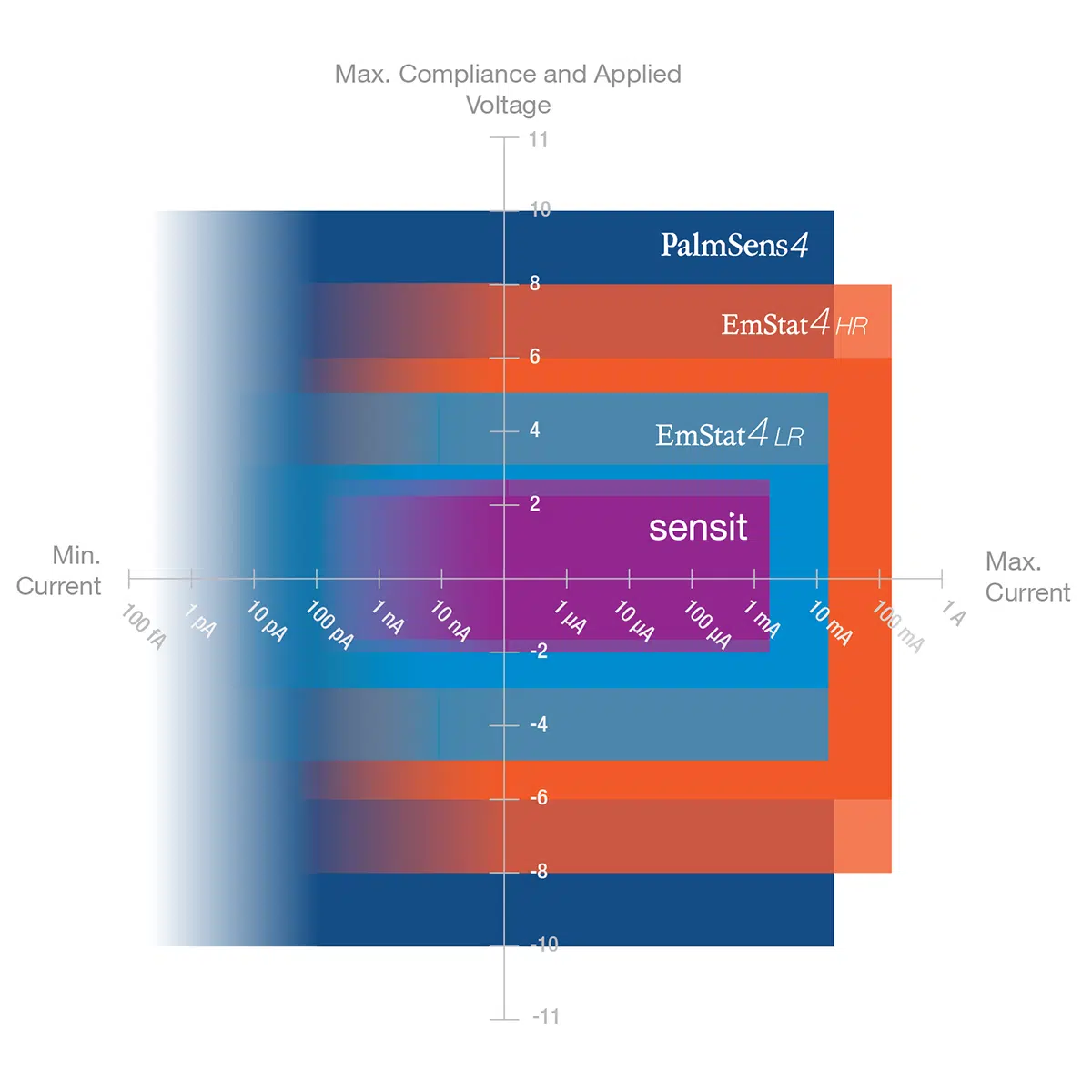Sensit Smart
Smartphone potentiostat
- Capable of EIS up to 200 kHz
- Built around the EmStat Pico module
- Potential range -1.7 to +2 V
- Current ranges 100 nA – 5 mA (max ±3 mA)
Description
 The Sensit Smart is the world smallest ready-to-go potentiostat available on the market. The Sensit Smart can be directly inserted in a smartphone or tablet and controlled via the Android app PStouch. You can use the USB-C Female to USB-A cable to connect the Sensit Smart to a classic USB port on your PC and control the Sensit Smart via our PC software PSTrace.
The Sensit Smart is the world smallest ready-to-go potentiostat available on the market. The Sensit Smart can be directly inserted in a smartphone or tablet and controlled via the Android app PStouch. You can use the USB-C Female to USB-A cable to connect the Sensit Smart to a classic USB port on your PC and control the Sensit Smart via our PC software PSTrace.
The Sensit Smart supports most common electrochemical techniques, including Cyclic Voltammetry, Square Wave Voltammetry and Impedance Spectroscopy (FRA/EIS).
The Sensit Smart comes with:
- Dummy Cell (SPE version)
- SPE to screw-terminal adapter
- USB-C Female to USB-A cable
- USB-C Female to Micro USB adapter
- USB-C Extension cable
- USB-C port protector
- PSTrace software for Windows (activation code for my.palmsens.com)
- PStouch app for Android (find it in the Google Play Store)
Compatible with most common Screen Printed Electrodes / Sensors |
|
| Sensor pitch: | 2.54 mm |
| Electrode connections: | RE, WE, CE |
| Allowed sensor thickness: | Between 0.1 mm and 0.8 mm |
| Maximum sensor width: | 11 mm |
Specifications
| General | |
|---|---|
| Full dc-potential range
The maximum potential difference, that can be applied between WE and RE.
|
-1.7 to +2 V |
| Dynamic dc-potential range [1]
The maximum potential difference, that can be applied between WE and RE.
|
2.2 V |
| Compliance voltage | -2.0 to +2.3 V [2] |
| Maximum current | ± 3 mA |
| Max. data acquisition rate (datapoints/s) | 1000 |
| Supports FRA/EIS | Yes |
| [1] The dynamic range is the range that can be covered during a single scan within the full potential range. For example; a linear scan can start at -1.5 V and end at 1.1 V or vice versa, covering 2.6 V dynamic range. [2] The compliance voltage is the maximum potential between Working and Counter electrode and depends on the selected mode.
The compliance voltage is the maximum voltage that can be applied between the working and counter electrode. Another name could be the maximum cell potential. Continue reading
|
|
| Potentiostat (controlled potential mode) | |
|---|---|
| Channels |
1 channel (1x WE, 1x RE, 1x CE) |
| Applied dc-potential resolution | 537 µV |
| Applied potential accuracy | < 0.2% |
| Current ranges | 100 nA to 5 mA (10 or 12 ranges, depending on the mode) |
| Current resolution | 0.006% of selected current range (5.5 pA on 100 nA range) |
| Current accuracy |
< 0.5 % of current ±0.1% of range |
| Measured potential resolution (for OCP) | 56 uV (for OCP) |
| FRA / EIS (impedance measurements) | |
|---|---|
| Frequency range | 0.016 Hz to 200 kHz |
| Ac-amplitude range | 1 mV to 0.25 V rms, or 0.708 V p-p |
| Electrometer | |
|---|---|
| Electrometer amplifier input | > 1 TΩ // 10 pF |
| Bandwidth | 250 kHz |
| Other | |
|---|---|
| Power and communication | USB-C |
| Storage | 4000 datapoints on-board |
| Size | 43 x 25 x 11 mm (excl. USB connector) |
| Weight | 10 g |
| Battery | No |
| Auxiliary port | No |
| Sensor connector | SPE (pitch: 2.54 mm) |
| Operation temperature range | 0 °C to +40 °C |
| EIS Accuracy Contour Plot |
|---|
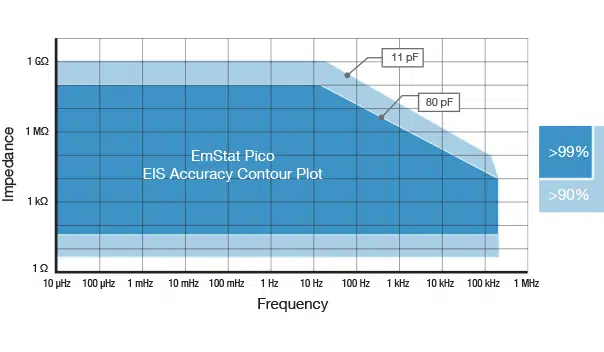 |
Software
PSTrace
PSTrace for Windows provides support for all techniques and device functionalities. With a smooth simple interface, showing only the applicable controls, PSTrace is suitable for all levels of user experience. Functions include:
- Direct validation of method parameters
- Equivalent Circuit Fitting
- Automated peak search
- Scripting for running an automated sequence of measurements
- Open data in Origin and Excel with one click of a button
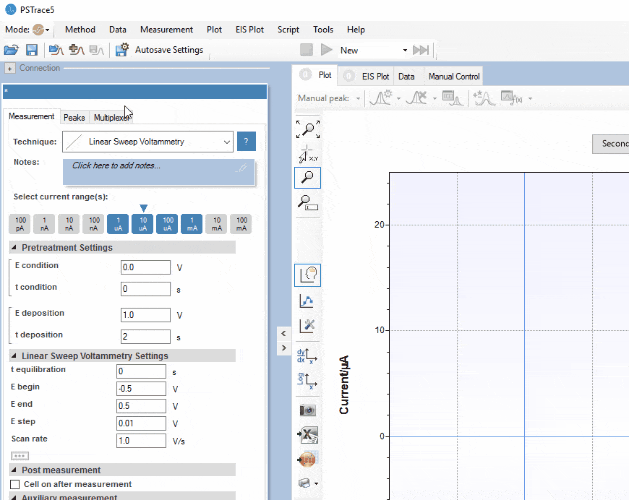
PStouch
PStouch works with all our single channel and multiplexed instruments. PStouch functions include:
- Setting up and running measurements
- Analysing and manipulating peaks
- Sharing data directly via e-mail, Dropbox, or any other file sharing service
- All files compatible with PSTrace
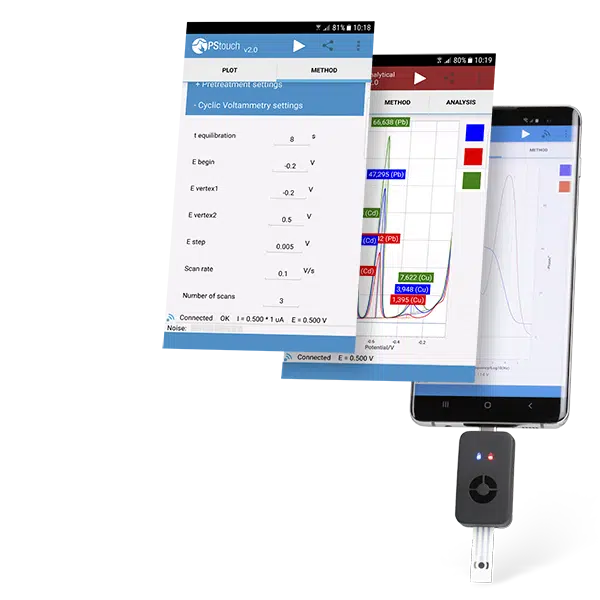
Software Development Kits
The PalmSens Software Development Kits (SDKs) for .NET can be used with any of our instruments or OEM potentiostat modules to develop your own software. The SDK’s come with a set of examples that shows how to use the libraries.
PalmSens SDKs with examples are available for the following .NET Frameworks:
- WinForms
- WPF
- Xamarin (for Android)
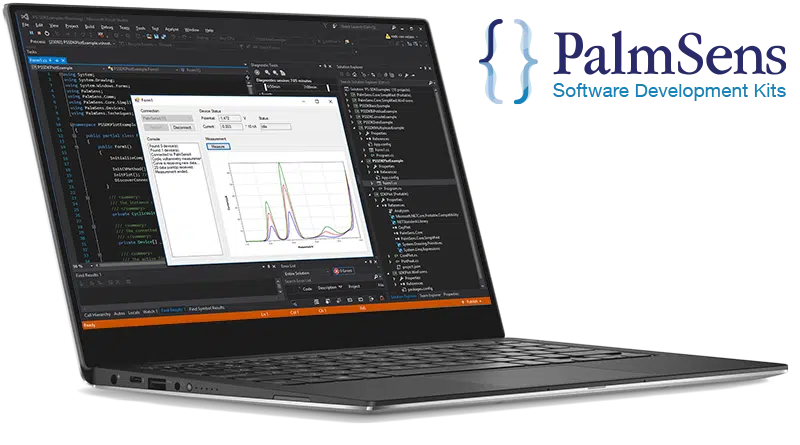
Compatibility
My sensor fits the connector.
The required electrochemical technique for my application is supported.
The analyte conductivity does not require a compliance voltage of 2/2.3 V.
Downloads
Software (2)
| Name | Last updated | |
|---|---|---|
| PSTrace PC software for all single channel instruments PSTrace software is shipped as standard with all single channel and multiplexed instruments. The software provides support for all techniques and device functionalities. | 08-07-24 | |
|
MethodSCRIPT code examples
MethodSCRIPT code examples include:
- MethodSCRIPTExample_C - MethodSCRIPTExample_C_Linux - MethodSCRIPTExample_C# - MethodSCRIPTExample_Arduino - MethodSCRIPTExample_Python - MethodSCRIPTExample_iOS - MethodSCRIPTExample_Android Every code example comes with a "Getting Started" document. |
07-07-24 |
Documentation (5)
| Name | Last updated | |
|---|---|---|
| MethodSCRIPT v1.5 The MethodSCRIPT scripting language is designed to improve the flexibility of the PalmSens potentiostat and galvanostat devices for OEM users. It allows users to start measurements with arguments that are similar to the arguments in PSTrace. PalmSens provides libraries and examples for handling low level communication and generating scripts for MethodSCRIPT devices such as the EmStat Pico and EmStat4. | 25-03-24 | |
| MethodSCRIPT v1.4 The MethodSCRIPT scripting language is designed to improve the flexibility of the PalmSens potentiostat and galvanostat devices for OEM users. It allows users to start measurements with arguments that are similar to the arguments in PSTrace. PalmSens provides libraries and examples for handling low level communication and generating scripts for MethodSCRIPT devices such as the EmStat Pico and EmStat4. | 01-02-23 | |
| Sensit Smart – Brochure | 09-09-22 | |
| MethodSCRIPT v1.2 MethodSCRIPT v1.2 protocol description | 28-04-20 | |
| MethodSCRIPT v1.1 MethodSCRIPT v1.1 protocol description | 17-04-20 |
Application Note (4)
| Name | Last updated | |
|---|---|---|
| Vitamin C Detection with ItalSens IS-C This application note describes how to create a calibration for quantitative measurements of vitamin C. Due to the detailed description and harmless solutions this an excellent electrochemical experiment with liquids for beginners in the field of electrochemistry. | 27-01-21 | |
| Limitations for EIS on EmStat Pico | 18-12-20 | |
| Sensit Smart Glucose Calibration Curve This app note shows how to measure glucose concentrations using the Sensit Smart | 08-04-20 | |
| How to connect cables to Sensit Smart Explains how to connect cables to the Sensit Smart | 08-04-20 |



























